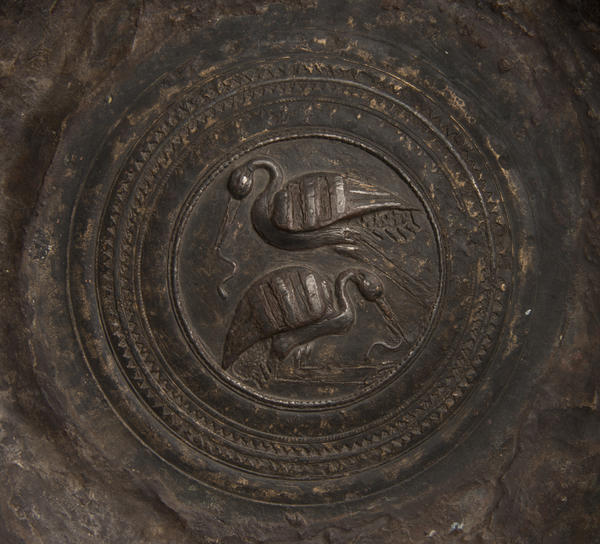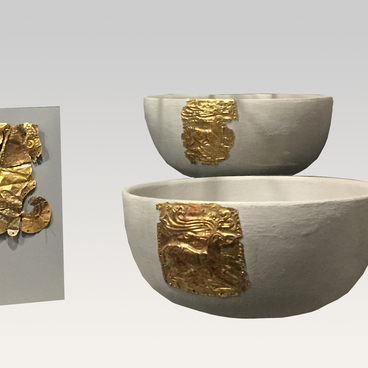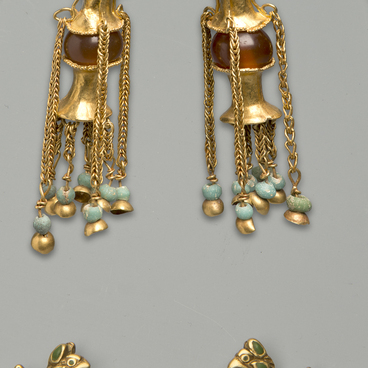A patera is a sacrificial vessel. The Azov Historical-Archaeological and Paleontological Museum-Reserve’s collection includes a patera with a medallion on the inside of the bottom and a handle capped with a ram’s head. A realistic image of two storks pecking two snakes is inserted in the central part of round relief medallion. The birds’ heads, necks, chests, bellies and partially wings are inlaid with white metal. The snakes are also decorated with white metal. From outside, the medallion is ornamented with several rows of patterns.
Bronze cast patera
Creation period
first third of the 2nd century A.D.
Dimensions
Diameter 27.4. Height 7.5. Handle length 15.5
Technique
bronze, white metal, casting, turning lathe, inlay
Collection
Exhibition
14
Open in app#3
#4
The patera handle was made separately and soldered to the vessel. This long straight handle is hollow inside. It is capped with a ram’s head sculpted in very realistic manner, with horns, eyes and small features shown in fine detail. The animal’s forehead is decorated with a band. Just like the medallion at the bottom, it is inlaid with white metal.
Embossed medallion at the bottom of the patera
#5
Bowls for libations were used for performing rituals. Even in Scythian era, bloody sacrifices based on the ideas about life-giving power of blood were widespread. Ancient people believed that blood and life were inextricably linked. Among Indo-European nations, such as Scythians and Sarmatians, it was believed that blood used in sacrificial rites promoted revival.
Ram’s head capping the handle
#6
However, in the first centuries of Common Era, bloody sacrifices were increasingly replaced by libations of red wine. First ritual vessels or their handles were fashioned into shape of rams. These vessels were made of gold, silver, bronze and clay. When one of them was filled with wine in ceremony, it personified a sacrificial animal. This tradition of ritual replacement has been preserved to this day in the form of the Christian Communion with wine that symbolizes blood. The Russian word for Communion comes from the root that means cup and denotes ritual drinking from a cup. Some ancient beliefs affirmed that human soul departed into afterlife astride of a ram. This is probably the reason why this animal was so often depicted on ritual utensils.
#7
Ministry of Culture of the Russian Federation
read morehide
00:00
00:00
1x
Bronze cast patera
Creation period
first third of the 2nd century A.D.
Dimensions
Diameter 27.4. Height 7.5. Handle length 15.5
Technique
bronze, white metal, casting, turning lathe, inlay
Collection
Exhibition
14
Open in app
Share





